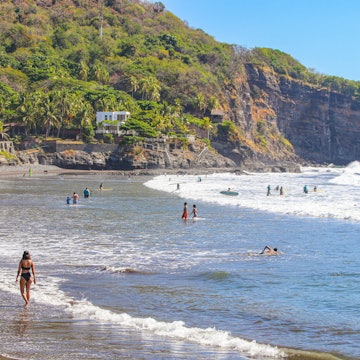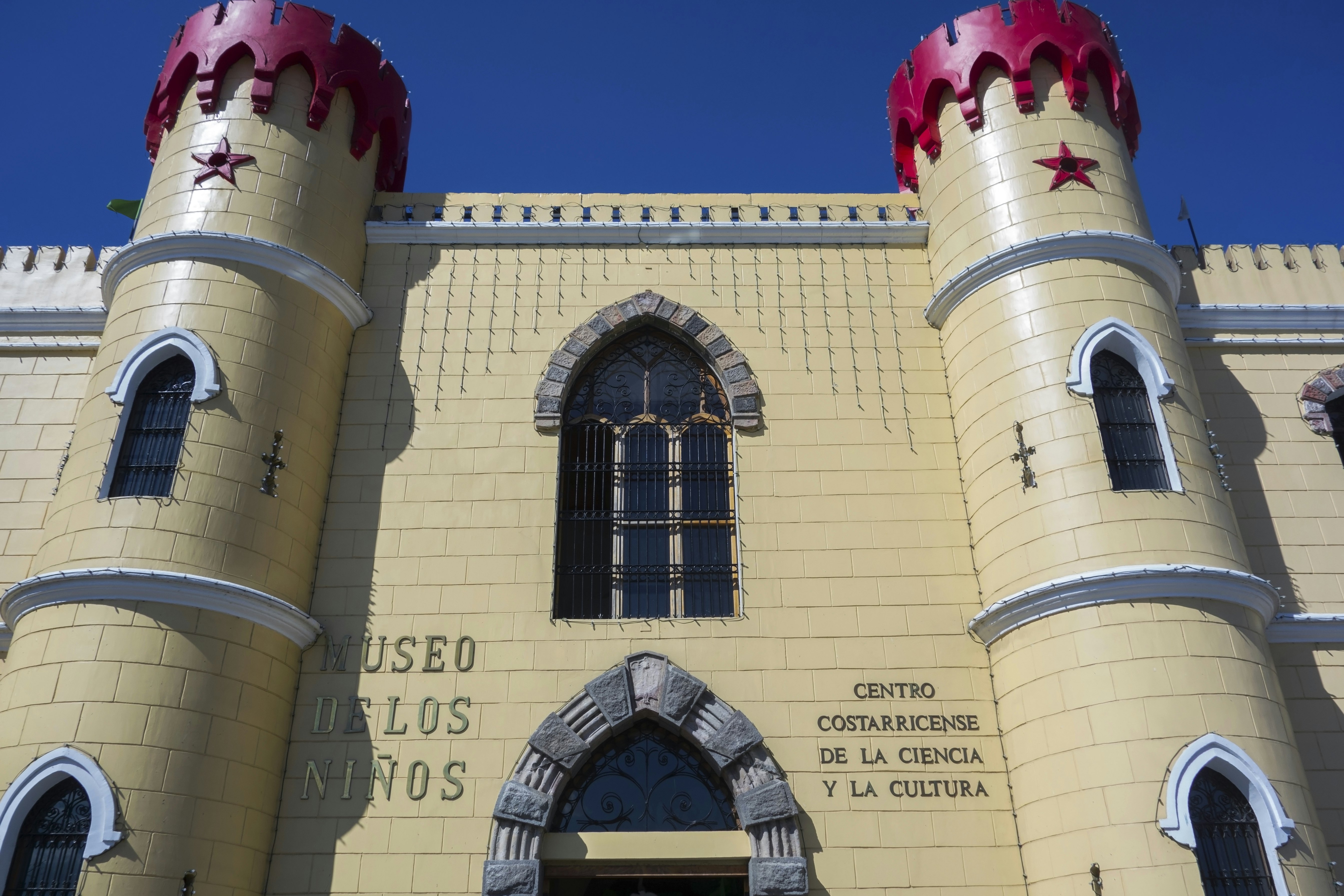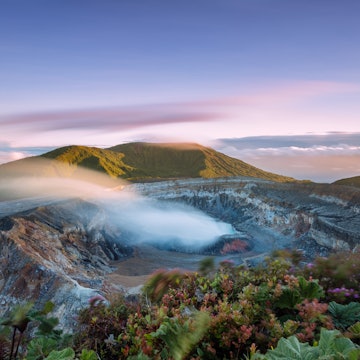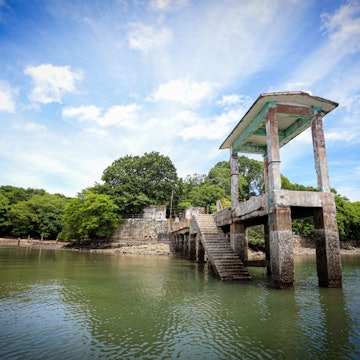
7 top things to do in San José, Costa Rica



Avenida Central, San José, Costa Rica. Luis Alvarado Alvarado/Shutterstock
Far from the toucans and zip-lines that make Costa Rica famous, San José is a dense and bustling city that’s the country’s cultural (as well as geographic) center. While many treat the place as a necessary stopover on the way to beaches, cloud forests and sloths, a few days here offers an appealing introduction to all Costa Rica has to offer.
San José doesn’t boast sweeping skylines or attractive bodies of water, and the city does take some time to appreciate – it’s true. But here you’ll find the country’s biggest museums, a dynamic art scene and exciting nightlife. Music fans will find a decent concert almost any night of the week, from songwriters in corner bars to rock stars in sold-out auditoriums. The city’s restaurant scene only gets better and better. And a stroll down the pedestrian mall of Avenida Central reveals the full diversity of the nation’s people on display, plus a good number of fellow travelers.
Here are a few top experiences you can enjoy in San José, Costa Rica.

1. Embrace Costa Rican history and culture at a trio of museums
The best museums in Costa Rica are all clustered in downtown San José, and it’s easy to walk from one to the other in a single day. Each one explores a different cross-section of Tico culture.
At the Museo de Jade, visitors are treated to room after room of jade sculptures, sacred artifacts and dioramas of Costa Rica’s Indigenous peoples. An atmospheric sound design and interactive screens bring this pre-Columbian world to life, transfixing even the youngest visitor. The museum doesn’t shy away from topics like sexuality and ritual warfare, and each exhibit reveals the most current archaeological findings. While most of the pieces are displayed under glass, one panel invites visitors to touch what’s inside.
A perfect companion is the Museo de Oro Precolombino, an underground museum beneath the Plaza de la Cultura, whose concrete walls are decked with ancient gold totems. Don’t miss the interactive 360-degree video presentation on Bribrí cultural hierarchy.
The bright yellow walls and medieval turrets of the Museo Nacional de Costa Rica are a welcome sight amid all the concrete in San José, and the building looks more like a fairy-tale castle than the military barracks it once was – catnip for architecture enthusiasts. Themed exhibits rotate through the museum’s galleries on a regular basis, from artwork to historical reflections; you can also head up to the roof and take in the surrounding skyline. Just outside lies the Plaza de la Democracía, where regular outdoor concerts take place.
Local tip: One of the best parts of the Museo Nacional is the enchanting Jardín de Mariposas (“Garden of the Butterflies”), an enclosed wonderland of tropical plants and 600 different species of butterflies fluttering about. The juxtaposition of jewel-bright butterflies and modern construction makes the experience that much more unique and memorable.
2. Feel the city’s creative buzz during the Art City Tour
San José’s Art City Tour is a giant, citywide open house for cultural institutions, and anyone can join in. Designated buses whisk attendees to participating sites for free; participants are also encouraged to ride bikes or stroll from site to site. Organized by local government agency GAM Cultural, the event happens a few times each year, and endeavors to enrich urban living through the arts.
Thousands of people turn out for the evening event, as the streets of San José teem with artists, students and families who might not otherwise come out after dark. They trickle through museums and galleries, which often synchronize their exhibit openings with tour dates. This festive event is a budget-friendly way to see San José at its very best.
Planning tip: The Art City Tours take place roughly every quarter. If you want to add some urban energy to a longer Costa Rica itinerary, it’s worth planning your trip around an upcoming edition.

3. Bring the kids to the castle-like children’s museum
Standing atop a hill, the Museo de los Niños is a children’s museum as an actual child would imagine one. The high walls are painted canary yellow, two towers flank a central gate and the windows are topped with pointed arches. Naturally, its nickname is El Castillo (“The Castle”). For its first 70 years, this compound served as a penitentiary, but in 1991 Costa Rica converted all those cells into playful installations and spaces for interactive games. The place does triple duty as auditorium and science museum, complete with full-scale dinosaur replicas.
Detour: Kids will also love taking a cab or bus to meet a few critters at the Refugio Animal de Costa Rica, an institution for injured animals. This shelter gives an excellent introduction into how Costa Ricans care for the natural world.

4. Catch a soccer match
Even if you wanted to, major soccer matches are impossible to escape in Costa Rica. Sports bars are jammed with fans. The play-by-play can be heard blaring out from every taxi radio. Every television in every home is tuned to the game. With each hometown goal, the city quakes with excitement.
But nothing beats attending the live event. Major games are held in the Estadio Nacional, where you can watch face-offs between regional rivals or even Costa Rica’s national team, “La Sele,” versus international visitors. The state-of-the-art stadium has seats for 35,000 spectators and also holds big-name concerts.
Local tip: Scoring tickets to Estadio Nacional matches can be tough; try reserving them online or visiting the stadium kiosk in La Sabana.
5. Bistro-hop in Barrio Escalante
You could eat out in the neighborhood of Barrio Escalante for weeks and still find something new and delicious to try. For in recent years the neighborhood, to the east of San José’s core, has blossomed into Costa Rica’s restaurant hotspot.
One of the early locations was Cafeoteca (formerly known as Kalú). This spacious ranch house–turned–cafe has white walls and a generous atrium, giving it the atmosphere of a welcoming greenhouse.
Around the corner, the Calle 33 food hall boasts numerous different kitchens under one roof. You can order just about anything – from ramen and burgers to soups and tacos – then sit down anywhere in the funky cafeteria. The open seating plan makes Calle 33 a great spot for groups with diverse palates.
True fine-dining comes in the form of Isolina, an elegant spot known as much for its wine as for its international cuisine, and Sikwa, which elevates pre-Columbian and Indigenous culture and cuisine.
Local tip: You might never hear the term “gastropub” as often as you will in Barrio Escalante, and cerveza artesanal (craft beer) has become a local specialty. The most ostentatious spot is Costa Rica Beer Factory, an enormous Tyrollean biergarten located smack-dab in the middle of Calle 33. Another popular choice is Wilk, a bar with a slacker vibe, diverse brews and an entire wall covered floor-to-ceiling in beer bottles.

6. Enjoy live music
San José has a feisty music scene, with Tico bands always jockeying for local stages. You can find live performances almost every night leading into the weekend, especially at a handful of popular venues. El Observatorio draws big crowds to its colorful, high-energy auditorium. In a converted residential villa, Amon Solar has become a favorite destination for blues, jazz and reggae. StarView C.R. feels like a grunge bar from the 1990s – and while it looks like it’s been around forever, it’s actually one of the newest venues in town.
Many other stages are hidden away among San José’s side streets, and you can easily track down a DJ any Friday or Saturday. Just follow the crowds – and vibrations.
Planning tip: Cabs will be your friend in San José, for nights get dark here and the rainy season really hits its stride overnight. If you’re out late and have trouble hailing a taxi, bar and restaurant staff are usually happy to help.

7. Go out on the town
The nightlife in San José is loud, boozy and keeps the party going till well past midnight. Downtown’s biggest hot spot is Barrio California, an intersection where several different sports bars and nightclubs throb with activity all weekend long. The scene can take the form of a raging dance party at La Destileria, an indie film at Cine Magaly or cocktails at sophisticated La Buenos Aires 1905.
You can also venture out to the college district of San Pedro, where numerous dance clubs flank the campus of the Universidad de Costa Rica. The most famous destination is Calle de la Amargura (Bitterness Street), where several popular college hangouts stand shoulder-to-shoulder.
Local tip: Master the art of zarpe, which means “last drink” or “nightcap” in Tico Spanish. Celebrants will often use the word to taper off for the night – usually with irony, as many will enjoy several zarpes before the night is through.
This article was partially adapted from Lonely Planet’s Central America guidebook, published in October 2025.















